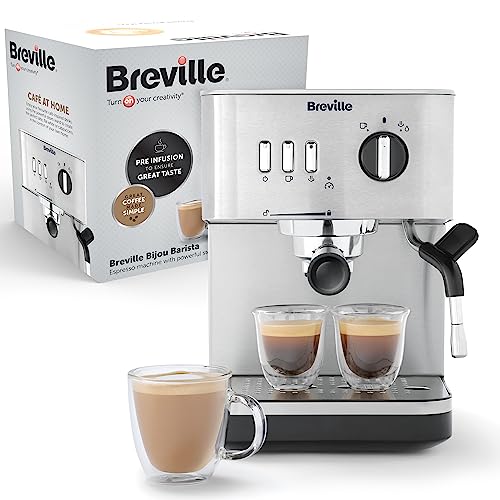How to Make Espresso Machine Coffee
Espresso machines can create delicious cups, however they require more maintenance and setup than a standard coffee maker. It also requires that you grind and tap your own beans.
The primary ingredient to make espresso is pressure. Here's how an espresso machine operates: a heating device warms water to the perfect temperature, then it pushes it through the grounds and out the spouts.
Temperature
Espresso is made when hot water is forced under pressure through finely ground coffee. The temperature of the water is crucial to the quality of the final shot. Insufficient temperatures can result in the inadequate extraction of the essential flavor compounds. High temperatures can cause over extraction, which can cause burnt or bitter flavors.
The ideal temperature range for espresso is between 195 and 205 degF. This temperature is achieved using a group head made to maintain the stability of temperature and maintain a constant temperature throughout the brewing process. The most popular type of group head is the E61 which offers the stability of temperature and pre-infusion capability, as well as lever control.
It is important to consider the temperature when adjusting your espresso machine for different roasts or brew ratios. buy espresso makers will affect the extraction yield and the crema. The optimal temperature will be contingent on the specific bean and roast, but the general rule is that lighter roasts and greater brew ratios require higher temperatures than darker roasts and lower ratios of brew. In addition, a high thermocouple is crucial in ensuring a consistent temperature.
Pressure
During the brewing procedure espresso machine coffee is pushed under pressure through finely ground coffee grounds that have been removed. This causes chemical reactions to extract flavors oils, flavors and other soluble components from the beans. The resultant beverage is usually richer and more flavorful.
The ideal espresso machine pressure should be nine bar which is the equivalent of sea-level pressure. The soluble compounds present in the espresso bean are most effectively extracted at this pressure.
Some espresso machines advertise up to 20 bars of pressure. They may be able to attain these pressure levels but they may not maintain them throughout the extraction.
One bar of pressure is equal to 32 pounds per square inch (PSI) of a car's tire. This is more than four times the pressure a professional cyclist uses to pump up their bike tires. Any serious home barista needs to be able control the pressure of their espresso machine, and also produce consistent espressos.
Water
Water is an essential ingredient in a delicious cup of espresso. The correct water will assist your beans in reaching their full potential, and the wrong type of water can cause issues like clogged pipes, or even damage to your expensive espresso machine.

The best choice is a natural spring water that is high in minerals to ensure optimum espresso extraction. This water will enhance the taste of your espresso without the chalky mineral trace that is found in tap or bottled water. This is an excellent alternative to distilled or reverse osmosis filtered water, which is often too pure and cause problems with flavor.
However, you should never use an water filter that removes too many minerals from your tap water as this can also cause flavor and extraction issues. Buy a water testing kit to determine the average hardness of your local water. This information can be used to find the right filtration system for your espresso machine.
Beans
Many coffee enthusiasts become enthralled in the entire process of making espresso. They obsess about a number factors, including temperature, pressure of water and viscosity. If one variable is even slightly off, the whole shot might taste bad.
The most important aspect in the matter of espresso is the beans used. It is often believed that only certain types of beans are suitable to be used in espresso. While certain beans are to be used for specific purposes, any roasted bean can be used for espresso. Espresso beans are roasted longer than regular coffee beans, which is over the second crack. This creates a darker appearance and makes them more water-soluble.
Medium or dark roast beans are ideal for espresso, as they give the espresso a richness and boldness. Lightly roasted beans can be used to make fantastic espresso, particularly if they are pre-ground for convenience in an espresso maker.
Milk
Espresso and milk is a timeless combination. The combination of milk and espresso is a classic. Not only does it improve energy levels but it also helps balance the bitterness in the espresso. There are few culinary duos more perfect than this!
If you choose to buy an espresso machine that can also create cappuccino or latte, be sure to examine how easy it is to use. The best espresso machines come with an ice cube that can be filled with cold or hot milk, a steam wand and an espresso portafilter to pull the shot. Some models include a built in grinder, tamper, or frother.
The steam wand should be purged before using it for the first time in a day (or after every cup of espresso) to remove any water that has condensed. This process only takes 30 seconds, but it is crucial to ensure that your machine is running smoothly. Failure to cleanse can cause bitter taste or accumulation of bacteria that may alter the taste and smell of your beverages. It's easy to perform and should be part of your routine maintenance.
